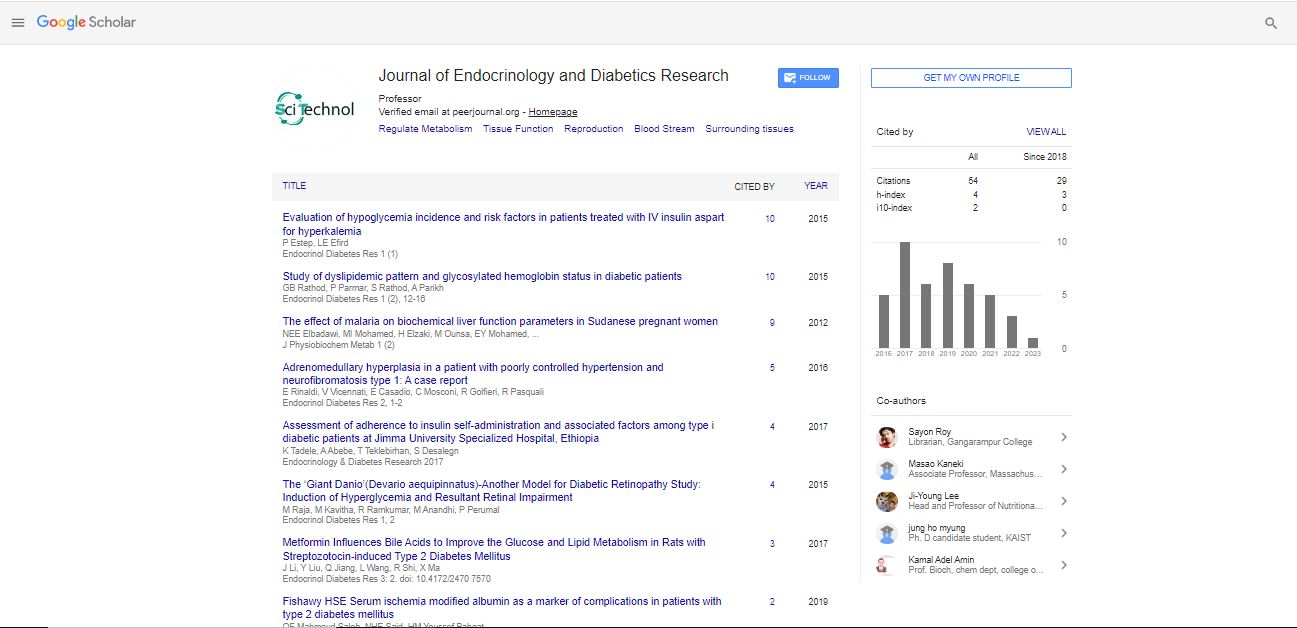Research Article, Endocrinol Diabetes Res Vol: 1 Issue: 2
Implementation of Protocols for Glucose Control in Patients Hospitalized in Internal Medicine Departments in Israel
| Avishay Elis1,4*, Dror Dicker2,4 and Micha J Rapoport3,4 | |
| 1Department of Medicine, Rabin Medical Center, Beilinson Hospital, PetachTikva, Israel | |
| 2Department of Medicine, Rabin Medical Center, Hasharon Hospital, PetachTikva, Israel | |
| 3Department of Medicine, Assaf Harofeh Medical Center, Zerifin, Israel | |
| 4Sackler Faculty of Medicine, Tel Aviv University, Tel Aviv, Israel | |
| Corresponding author : Avishay Elis Department of Medicine, Rabin Medical Center, Beilinson Hospital, PetachTikva 49100, Israel Tel: +972-3-9376301 Fax: +972-3-9221605 E-mail: avishayel@clalit.org.il |
|
| Received: March 20, 2015 Accepted: May 07, 2015 Published: May 12, 2015 | |
| Citation: Elis A, Dicker D, Rapoport MJ (2015) Implementation of Protocols for Glucose Control in Patients Hospitalized in Internal Medicine Departments in Israel. Endocrinol Diabetes Res 1:2. doi:10.4172/2470-7570.1000105 | |
Abstract
Objective: The purpose of this study is to determine the degree of implementation of a protocol for managing hyperglycemic patients hospitalized in general medical wards. The protocol, recommended by the Israeli Society of Internal Medicine, consists of a target blood glucose level of 140-180 mg/dl and a treatment algorithm based on once-daily administration of subcutaneous basal insulin plus prandial short-acting insulin.
Methods: A questionnaire for physicians on various aspects of glucose control in patients hospitalized in medical wards was published on the ISIM website between June and December 2012.
Results: One hundred twenty-four physicians responded. Most (53%) targeted glucose levels at 140-180 mg/dl. The large majority (83%) used a basal-bolus insulin-based protocol, and approximately 80% administered a changeable dose of shortacting insulin according to preprandial glucose determinations. The approach used most often for glucose measurements was the triple preprandial method (66%), performed mostly by nurses (72%). Decisions regarding the dose of short-acting insulin were usually made by the physician (75%), with or without involvement of a nurse. The estimated reported rate of patients discharged with a recommendation to continue the protocol was highly variable, ranging from below 25% to above 75%.
Conclusions: These results suggest that most physicians in departments of internal medicine in Israel implement the accepted guidelines for glucose control in hyperglycemic hospitalized patients. Further efforts to make the protocol more feasible and clinical studies providing clear evidence of benefit may increase its use.



